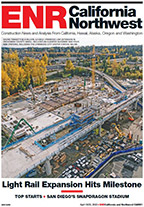Booming Ridership Prompts Push for More Light Rail in Jerusalem
With ridership on Jerusalem's first light-rail line more than double initial projections, officials in the city and the country's Transportation Ministry are moving ahead with plans for five new lines.
Officials report that 140,000 riders now use the train on a regular day. The expansions could bring that number to 250,000, they say.
The existing red line is to be expanded to 36.2 kilometers from 13.9 km to two new neighborhoods, Neve Yaakov and Ein Kerem, the site of the newly expanded Hadassah Hospital.
That line already has been approved by the country’s planning commission, and work is expected to be completed in 2016. A new line, dubbed the "campus line" and to be completed in 2020, would link the Hebrew University's Mount Scopus campuses and the Givat Ram central city neighborhood, where key government institutions such as the Knesset are located.
Work on additional lines would begin in 2020. They include a green line, which would extend from Mount Scopus to the Gilo neighborhood in southern Jerusalem; and a proposed blue line from the East Jerusalem suburb of Ramot to Gilo, with a fork out to another southern suburb called Malha, terminus for an Israel Railways line. The two lines are expected to be completed in 2025 at a cost of $3.5 billion.
The final plan calls for two more lines, a brown line in East Jerusalem and a purple line from just outside the Western Wall in the Old City to Givat Ram. The cost of the two lines is estimated at $2.5 billion.
Transportation Minister Israel Katz said the expansion was part of a joint effort between the ministry and city to provide more efficient transportation solutions to the capital’s residents. “The public transportation system in Jerusalem is going through a revolution that can be an example to other cities in the country,” he told The Jerusalem Post.
Katz said the ministry is modeling the system after those in European countries that have significantly cut down on traffic and pollution by creating efficient and convenient railways.


